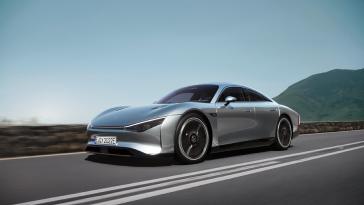Hi
@TECH, I agree with your sense of BRN having turned the corner, but my view is that: we won't know that for sure until we see consistent and growing monies in the 4Cs. The eco system is becoming more compelling and is growing very fast lately, and with some very exciting names, so that all continues to build an underlying belief. So I'm thinking that the next (nearly due) 4C probably won't see much revenue and we know that there are no new contracts, however my hope is that we begin to see something in the March Qtrly
I have strong respect for your belief and steadfastness, and on the whole am very appreciative of what you bring here.
Excitement is something that I feel, and I like to be excited, however at times excitement can simply be the front runner for a let down, so I watch my excitement levels particularly with regard to investments, and I certainly watch very carefully the "thing" of getting attached to outcomes, not saying I've got that lifetime challenge down, but I'm playing at being mindful there.
While the education grows here, none of us long termers knew when we initially began building positions that the company would be shifting to an IP sales model, and the extended timeframes that this move would entail, even now many newer investors still do not understand the process and how it is impacting income for BRN. So income has become a slow burn, this has not been helped by the macro economic environment we now find enveloping the world, and war never helps anything, management have played that card and it's obvious it hasn't helped.
I have mentioned this before, and I will say it again, I am not so sanguine or bullish as some here about global economic prospects going forward, that doesn't mean I am all that negative, but a big fascination of mine (and has long been) is with regard to political, historic and socio/economic research, and there is "stuff" going on out there that concerns me, and I am certainly mindful of it - I read widely and a lot. Primarily I want success and I hope and pray (again) for good things and bountiful returns for those here who are invested.
So this concern is not so much with the disruptive tech which BRN is working on taking to the world, but rather that things here on earth don't get too wacky (messed up) before BRN/Akidas can get widespread traction out there in the world of business/commerce, that is another timeframe I look at.
I'm confident in what BRN are doing and I am well enough researched to know that the tech is outstanding. The company have certainly made mistakes, and some of that has been /is very annoying to me, but I think they are building the basis for success into the future (but as I said there are real concerns there IMO). On the management front if I were at the AGM I would have questions about their failure to use the ASX platform to announce a plethora of worthwhile information to Australian investors. I am well aware others will have different questions
There have been mistakes, there has also clearly been very good progress, I don't expect perfect, but as Sean said he should be judged on results, and I would also take that as: he would therefore be responsible for what has or hasn't happened.
With regard to Peter I remain a big fan (although it is IMO unfortunate that he made the "explosive growth" remark, but I think at the time certain external economic factors had not taken hold) Peter has invented something that could change the world, which would make him a person of some genius, he has for a long time come across as a humble man of high integrity. But I wouldn't know if money was a driving passion for him, and to be quite honest I hope that it is. So I don't agree with your sentiment
@TECH, with regard to "and there within lies the problem for many". I am here to make money and am totally comfortable with that sentiment.
I don't love BRN, but I have not sold a single share (and am thinking of buying more, it's a few years, but maybe I will) and at present I remain in the green, however I do have empathy for holders here who are taking a beating (i really think that the Mercedes reveal was unfortunate, and created unrealistic expectations and set many retail investors up for bad manipulation by malevolent actors). Having said that I don't like some who come here wanting to be serial whingers who apparently take pleasure in slagging off other people here who continue to do excellent research and remain strong in their investment sentiment. That kind of behaviour is what losers get into. If you have something to say, yes say it, but needing to say it several times a day, every day, means you have most likely got.....well good luck with it.
At the end of the day we all pushed the buy button, and as far as I am concerned, that is where the ultimate responsibility lies - observe what is moving inside and if you need, or want to, take action. And as you might say Tech have a good evening.
)

www.theregister.com





